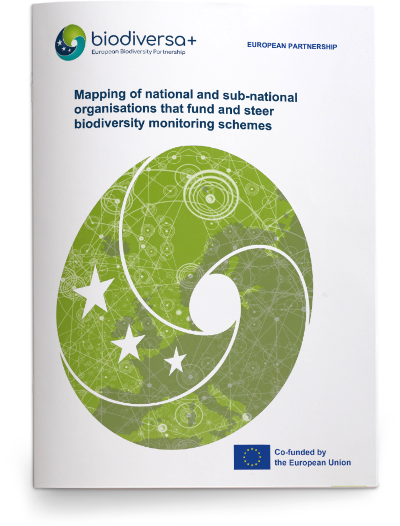“Mapping of national and sub-national organisations that fund and steer biodiversity monitoring schemes”
One of Biodiversa+’s core goals is to establish a network of harmonised biodiversity monitoring schemes across Europe. As a key step toward this, we conducted a comprehensive mapping exercise in 2022 to identify the ministries, agencies, and organisations responsible for funding and coordinating national and sub-national monitoring schemes. The effort, based on a survey and interviews with partners from 23 countries, focused on how monitoring is organised, governed, and funded at different levels.
Some takeways
- Governance structures are predominantly national (88.5%), although sub-national coordination exists in countries like Belgium and Italy. Some nations are developing dedicated national coordination centres with notable investments in Italy, Croatia, and Germany. Many respondents expressed a need for further support in this area.
- Ministries of Environment and Environmental Protection Agencies usually steer and coordinate schemes, though actual data collection is often carried out by networks of research institutes, academic groups, NGOs, and volunteers—particularly for species monitoring.
- Coordinating bodies commonly manage networking, data centralisation, funding, reporting to EU directives, and indicator development.
- Monitoring governance is divided by realm (terrestrial, freshwater, marine) in around 70% of countries.
- Funding remains fragmented and difficult to track, particularly due to the involvement of multiple actors. Budgets are often shaped by EU directive reporting needs, and EU funding (e.g., LIFE programme) plays a vital role. However, a major challenge is the lack of secure, long-term funding, with many schemes depending on short-term project-based support.
- Data management approaches vary. While some countries are creating national portals, challenges persist around data sharing, fragmentation, and standardisation. Several efforts are underway to align with FAIR principles and link national data hubs to global platforms like GBIF.
- Centralising national/sub-national Essential Biodiversity Variable (EBV) results could serve as a cornerstone for building a truly transnational monitoring system.
This mapping provides insight for setting up a European Biodiversity Observation Network and an EU Biodiversity Monitoring Coordination Centre with national counterparts. It will directly inform Biodiversa+’s efforts to co-develop a cohesive, transnational monitoring network and guide future actions.
